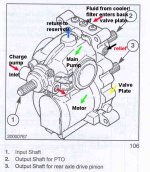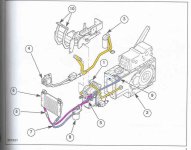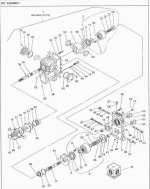jinman
Rest in Peace
- Joined
- Feb 23, 2001
- Messages
- 20,387
- Location
- Texas - Wise County - Sunset
- Tractor
- NHTC45D, NH LB75B, Ford Jubilee
Ben, think of the cylinder section of the pump like the cylinder section of a revolver pistol with multiple chambers. The entire cylinder would have to be replaced if it went out of tolerance, but the pistons could be individually replaced like bullets in a revolver. ...only not so easy. /forums/images/graemlins/smile.gif
The tolerances are very close, but really no closer than the control valves used for our FELs. Many of those are metal-to-metal close tolerance fits also. /forums/images/graemlins/cool.gif
Later this weekend I'll post an illustration from my parts catalog that shows every component of the NH hydro tranny in an exploded view. Then we'll be able to talk about individual parts by reference number callouts on the diagram.
The tolerances are very close, but really no closer than the control valves used for our FELs. Many of those are metal-to-metal close tolerance fits also. /forums/images/graemlins/cool.gif
Later this weekend I'll post an illustration from my parts catalog that shows every component of the NH hydro tranny in an exploded view. Then we'll be able to talk about individual parts by reference number callouts on the diagram.



